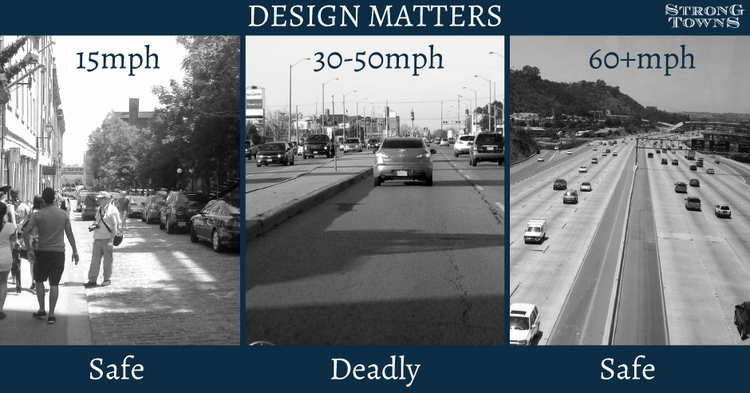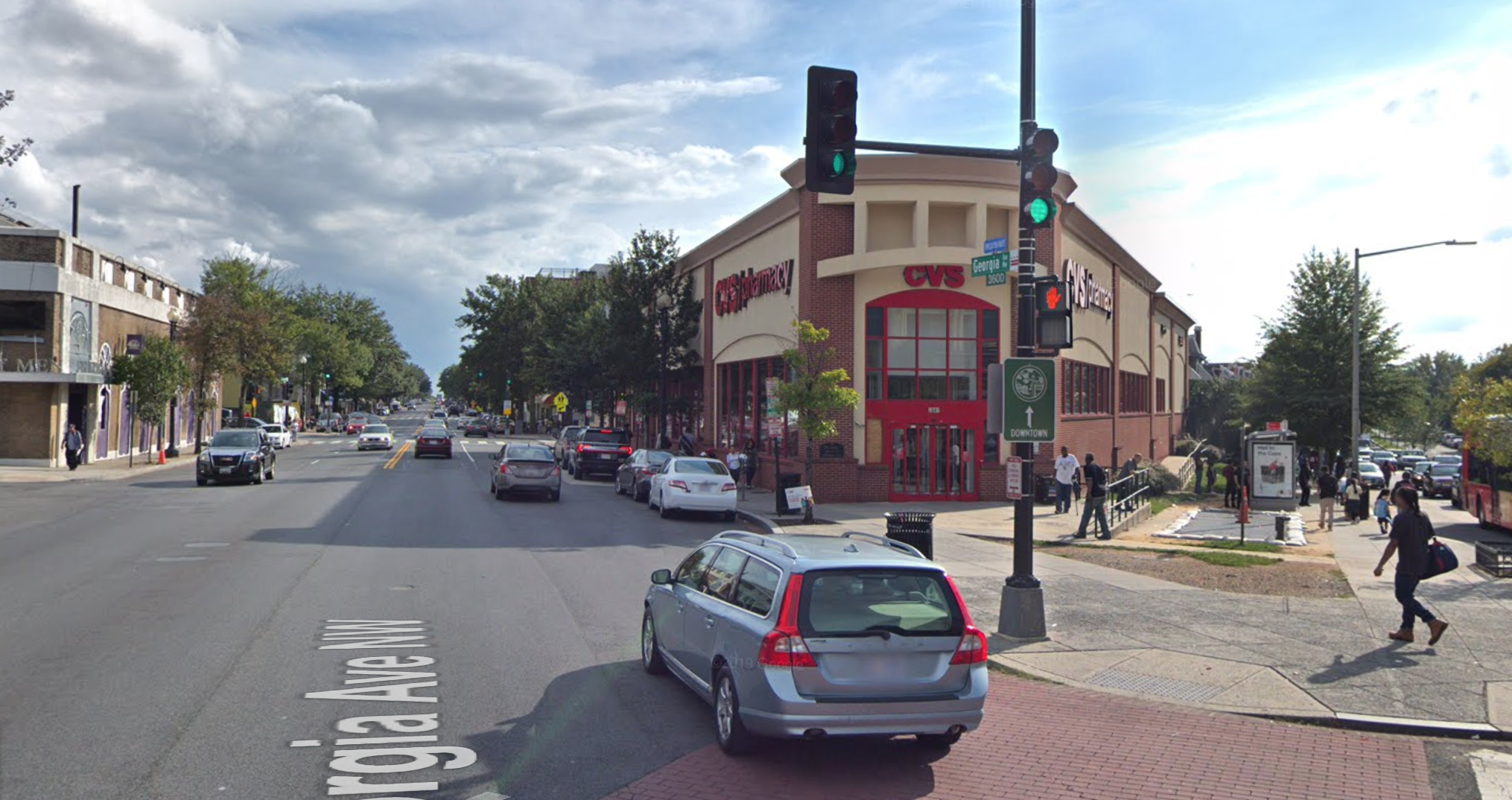Competition: Which street is the most dangerously-designed?
This week, we’ll be taking a deep dive on our second principle for transportation policy: design for safety over speed. Throughout the week, send photos of streets in your area that are designed for speeds far higher than the posted speed limit or where the speed limit is way too high for the context. On Friday (Nov. 8), you’ll have a chance to vote for the worst offender.
 At slow speeds, cars can mix safely with other road users. High-speed interstates remove conflicts to keep people safe. But when people and high-speed traffic mix, that’s a recipe for disaster.
At slow speeds, cars can mix safely with other road users. High-speed interstates remove conflicts to keep people safe. But when people and high-speed traffic mix, that’s a recipe for disaster.
There’s a difference between the speed limit posted on a road and the speed the road has been designed for. People will drive at the speed they feel comfortable, regardless of the speed limit. Wide, straight lanes with open skies, long blocks, and few traffic signals or stop signs tell drivers it’s okay to go fast. Conversely, narrower lanes, more frequent crossings, and street trees can encourage slower speeds that are more appropriate for developed areas.
Off the interstates, in areas with shops & restaurants, offices, schools, and homes, we should be designing for slower speeds—speeds that keep people walking, biking, or taking transit safe and comfortable. Too often these very streets are designed to encourage high-speed thru traffic and then we wonder why our streets are so dangerous to people walking and biking.
Send us photos of dangerous streets in your area! Email us at jenna.fortunati@t4america.org or tweet your photo(s) to @t4america and tell us a little bit about it. On Friday, we’ll poll our followers to identify the most egregious example of a street that prioritizes speed of people’s safety.
Examples of unsafe streets abound, and it’s not just suburban arterials. Take for example, Georgia Ave NW through the heart of Washington, DC. The posted speed limit is 30mph, but this four-lane, two-way road is arrow straight and drivers rarely travel at or below 30.

Within a few hundred yards of this photo there are laundromats and pharmacies, numerous bars and restaurants, homes for thousands of people, an elementary school, and a church. There’s also a metro stop and a dozen different bus stops—people walking are everywhere. Yet the design of this street clearly prioritizes the speed of car traffic over the safety of everyone else.
We want you to send us photos of streets where cars routinely drive above the speed limit (or where the posted speed limit is way too high) because the street isn’t designed to prioritize safety, or not designed appropriately for its busy context. Snap a photo this week and send them to us with a short description via twitter or email. On Friday, we’ll hold a poll on our Twitter account where you can vote for the worst offenders.




















Pingback: Transportation For America – Which street is the most dangerously-designed? You decide!